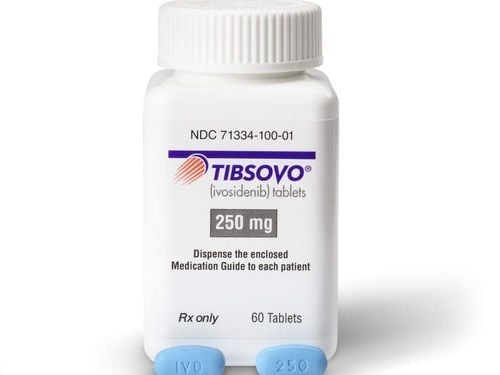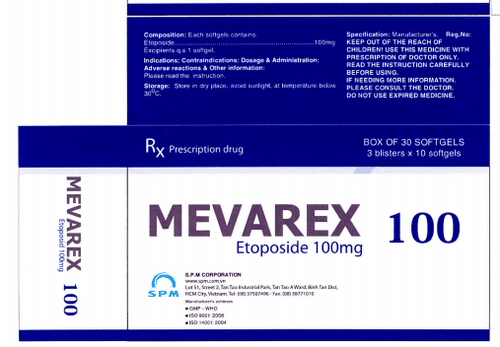This is an automatically translated article.
The article was written by Doctor Vu Duy Dung - Department of General Internal Medicine - Vinmec Times City International General Hospital.
Cerebral venous sinus thrombosis causes venous outflow obstruction leading to venous infarction. Complications include hemorrhagic transformation of infarcts and increased intracranial pressure. Without treatment, the blood clot will spread and symptoms will often worsen.
1. Understanding cerebral venous sinus thrombosis in children
Cerebral venous sinus thrombosis occurs when there is a thrombus in the large venous sinuses that drain the brain. Many patients with cerebral venous sinus thrombosis will progress to venous infarcts, which may herald the diagnosis, but infarcts are not always present.
The incidence rate of cerebral venous sinus thrombosis in children is approximately 0.4/100,000 children/year, although with advanced neuroimaging this figure may be understated. Cerebral venous sinus thrombosis may be in the dural sinuses (superior longitudinal, transverse, or sigmoid sinuses), the deep venous system (eg, the internal cerebral veins), or the cortical surface veins. In children, there are often many venous sinuses with thrombosis, in which the transverse sinus is the most common, followed by the longitudinal sinus.
2. Clinical manifestations
Headache is the most common presenting reason for cerebral venous sinus thrombosis, although it is nonspecific and is common in other pediatric conditions. Other symptoms that bring the patient to the clinic include seizures, lethargy, cranial nerve palsies, hemiparesis, and vomiting. Impaired mental status is a poor prognostic symptom suggestive of deep venous involvement.

3. Causes and risk factors
In the majority of children with cerebral venous sinus thrombosis, underlying risk factors can be identified and are often associated with venous stasis, dehydration, hypercoagulable disease, and direct vascular injury. due to injury or infection. Background risk factors that require immediate treatment, such as infections and blood cancers, are not uncommon. Drug history, including history of exogenous estrogen, should be explored. Thrombotic disorders are found in approximately half of children with cerebral venous thrombosis and in more than half of children with cerebral venous thrombosis without thrombotic triggers.Risk factors associated with cerebral venous sinus thrombosis
Hereditary hypercoagulopathy
Factor II (prothrombin G20210A mutation) Factor V Leiden Protein C deficiency Protein S deficiency Antithrombin III deficiency Increased homocysteine Drugs
Asparaginase Exogenous estrogens (including estrogen creams) Infections
Head and neck infections
Sinusitis Otitis media mastoiditis Oropharyngeal infection Primary varicella-zoster virus infection (chicken pox)
Autoimmune/inflammatory diseases
Systemic lupus erythematosus Inflammatory bowel disease Other acute and chronic conditions
Dehydration Nephrotic syndrome Blood cancer Sickle cell anemia Trauma
Head trauma
4. Diagnosis
Cerebral venous sinus thrombosis can be detected on CT, especially if contrast is injected; However, the sensitivity is poor. Brain MRI, especially T1 pulse with contrast injection, is the optimal investigation for the diagnosis of cerebral venous sinus thrombosis with venous stroke and associated venous congestion. TOF pulsed venous MRI (MRV) is commonly performed, but flow gaps in sites of slow or irregular flow can mimic cerebral venous sinus thrombosis, so it should be compared with pulsed pulses. T1 and T2 to evaluate thrombosis and venous sinus circulation. Anatomic variations of dural sinuses add difficulty to the diagnosis of cerebral venous thrombosis, and careful imaging review, comparison of imaging methods, and repeat imaging may be necessary. for accurate diagnosis.
Labs
Initial tests include CBC, electrolytes, urea, creatinine, glucose, prothrombin time, activated partial thromboplastin time, erythrocyte sedimentation rate, and antithrombin III activity to calibrate. equipment for diagnostic imaging and acute treatment, in addition to pregnancy testing in women of childbearing age.
Acute treatment
Children with acute symptomatic cerebral venous sinus thrombosis need intensive monitoring and treatment, as they are at risk of neurological deterioration and death, especially if there is damage deep vein system. Adequate fluid resuscitation and treatment of infection are important. Complications of cerebral venous sinus thrombosis occur due to venous outflow obstruction and venous infarction and bleeding. Large foci of venous infarcts can lead to increased intracranial pressure, and emergency treatment of elevated intracranial pressure including craniotomy and decompression may be necessary to avoid infarct brain tissue. brain herniation. In children with severe advanced cerebral venous thrombosis, especially those with worsening neurological status, thrombolysis or thrombectomy (or surgical decompression) may be considered if no improvement is seen. despite taking anticoagulants.
Seizures are common in patients with cerebral venous thrombosis, especially when cortical venous infarctions are present. Increased intracranial pressure can also lead to headaches, loss of vision, and cranial nerve palsies. If vision loss is concerned with increased intracranial pressure, lumbar puncture for rapid reduction of intracranial pressure may be necessary.
The American College of Chest Physicians and the American Heart Association (AHA) guidelines recommend anticoagulation for at least 3 months, starting with unfractionated heparin or low molecular weight heparin. If intracranial bleeding is present, the AHA recommends anticoagulation and the American College of Thoracic Physicians recommends anticoagulation or monitoring with brain imaging for 5 to 7 days and anticoagulation if the thrombosis is widespread. than. In a case series of children with cerebral venous thrombosis, thrombosis spread and worsening clinical outcomes were associated with non-use of anticoagulation in cerebral venous thrombosis in children. About 5% of children have "major" intracranial bleeding related to anticoagulation; however, children with “significant intracranial bleeding” on admission, other contraindications, and children whose physicians did not anticoagulate were not treated with anticoagulation in the study. save this. The results are consistent with guidelines for adults where anticoagulation is recommended regardless of intracranial bleeding.
|
Ca lâm sàng minh họa Trẻ nam 15 tuổi vào viện vì bệnh sử 1 ngày đau đầu mức độ nặng; tê buốt, kim châm và yếu tay phải; buồn nôn và nôn nặng dần; và một cơn mất ý thức và ngã khuỵu. Trẻ có tiền sử leukemia cấp nguyên bào lympho B trước đó và được điều trị PEG-L-asparaginase 10 ngày trước lần nhập viện này. Khám lâm sàng gợi ý rối loạn chức năng bán cầu não trái, mặc dù bị chồng lẫn bởi bệnh đa dây thần kinh và tình trạng yếu toàn thân. Nồng độ kháng nguyên antithrombin III thấp ở mức 46%. MRV xung TOF thấy huyết khối xoang tĩnh mạch dọc trên theo một đoạn dài 7 cm đến 8 cm. Xung SWI thấy một ổ nhồi máu chảu máu ở vùng đỉnh bên trái và xung huyết tĩnh mạch thấy rõ nhất ở bán cầu não trái. Trẻ được điều trị bằng enoxaparin và sau đó hồi phục các thiếu sót thần kinh và tan huyết khối. Bình luận Ca bệnh này minh họa huyết khối xoang tĩnh mạch não trong bối cảnh ung thư và hóa trị asparaginase. Cơ chế đầy đủ của tăng đông do asparaginase còn chưa rõ ràng, nhưng asparaginase gây thiếu hụt antithrombin III. |
Consequences
Death from cerebral venous sinus thrombosis is rare; however, neurological consequences including encephalopathy and seizures are common. Vision loss may result from increased intracranial pressure due to venous sinus obstruction and may present early in the course of the disease. Increased intracranial pressure may persist even in cases with complete recanalization on neuroimaging.
After cerebral venous sinus thrombosis, children are at higher risk of recurrent pathological thrombosis, including in the acute phase, and careful prevention should be discussed. Recurrent cerebral venous sinus thrombosis was reported in 6% of children followed for a median of 36 months after the first cerebral venous thrombosis. Recurrent cerebral venous sinus thrombosis is more likely in patients with persistent occlusion following cerebral venous thrombosis, those with heterozygous prothrombin G20210A mutations, those not receiving anticoagulation, and children whose first cerebral venous sinus thrombosis occurred after 2 years of age.
Conclusion
Perinatal stroke, cerebral ischemic stroke in children, and cerebral venous sinus thrombosis in children are important causes of morbidity in children. Strategies to improve outcomes include early diagnosis, prevention of early and late recurrence, prevention and treatment of complications, rehabilitation, and psychosocial support.
Pediatrics Department at Vinmec is one of the few multi-specialty hospitals with a full range of doctors specializing in neurology, cardiology, gastroenterology, nutrition, psychology, endocrinology, hepatology, helping to handle it quickly and in a timely manner. when diseases are discovered during the examination. As a key area of Vinmec Medical system, Pediatrics Department always brings satisfaction to customers and is highly appreciated by industry experts with:
Gathering a team of leading pediatricians: including leading experts with high professional qualifications (professors, associate professors, doctorates, masters), experienced, worked at major hospitals such as Bach Mai, 108.. Doctors All are well-trained, professional, with a mind - range, understanding young psychology. In addition to domestic pediatric specialists, the Department of Pediatrics also has the participation of foreign experts (Japan, Singapore, Australia, USA) who are always pioneers in applying the latest and most effective treatment regimens. . Comprehensive services: In the field of Pediatrics, Vinmec provides a series of continuous medical examination and treatment services from Newborn to Pediatric and Vaccine,... according to international standards to help parents take care of their baby's health from birth to childhood. from birth to adulthood Specialized techniques: Vinmec has successfully deployed many specialized techniques to make the treatment of difficult diseases in Pediatrics more effective: neurosurgery - skull surgery, stem cell transplantation. blood in cancer treatment. Professional care: In addition to understanding children's psychology, Vinmec also pays special attention to the children's play space, helping them to have fun and get used to the hospital's environment, cooperate in treatment, improve the efficiency of medical treatment. To register for examination and treatment with Pediatricians at Vinmec International General Hospital, please make an appointment on the website for service.
Please dial HOTLINE for more information or register for an appointment HERE. Download MyVinmec app to make appointments faster and to manage your bookings easily.
References:
Amlie-Lefond C. Evaluation and Acute Management of Ischemic Stroke in Infants and Children. Continuum (Minneap Minn) 2018;24(1, Child Neurology): 150-170.














